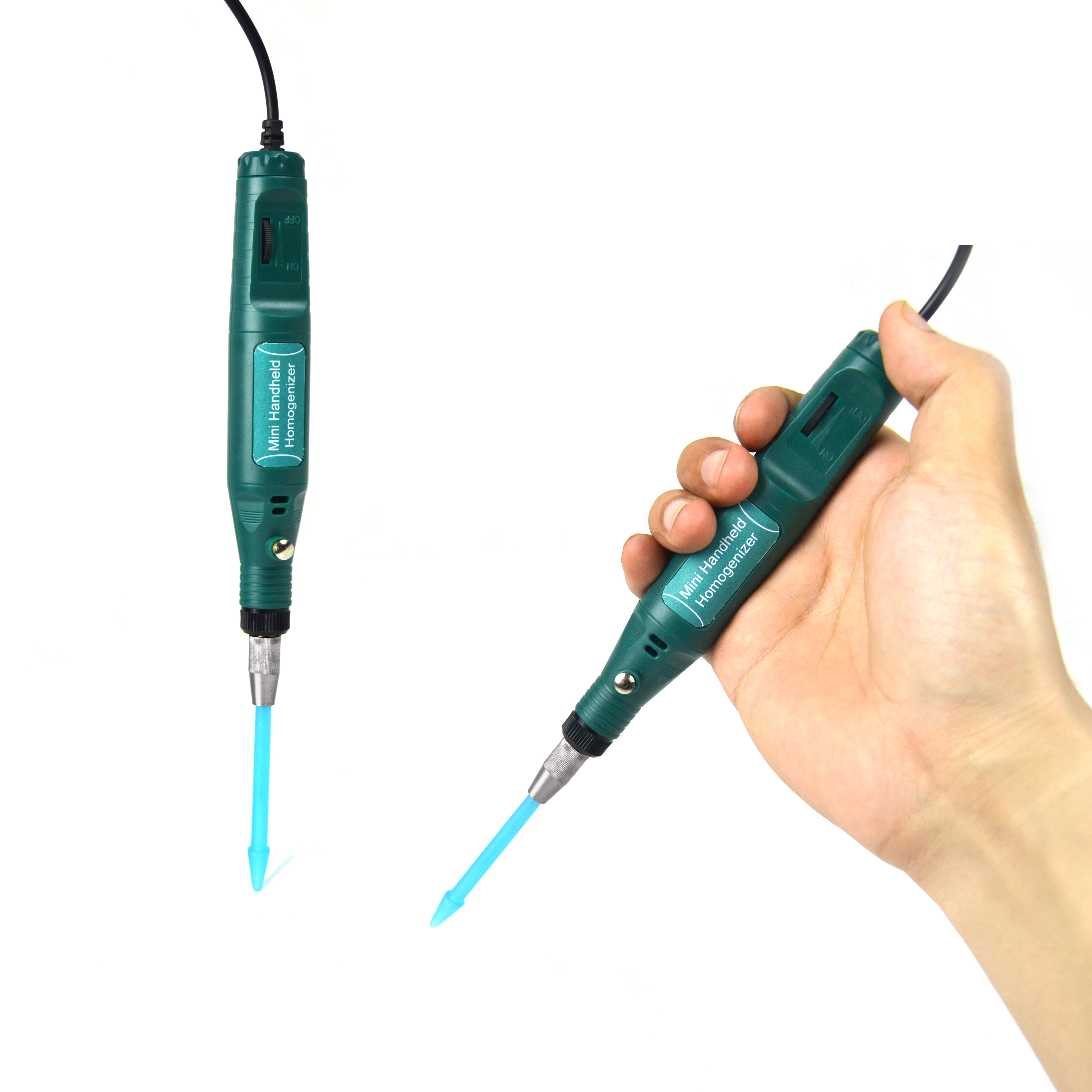Disrupting Cells with Tissue Homogenizers
 What is Cell Disruption?
What is Cell Disruption?
Cell disruption is a collection of techniques that releases biological molecules or other materials of interest from inside the cell. To extract proteins of interest, there are various cell disruption techniques and tools available, including a tissue grinder and tissue homogenizer.
All disruption methods, whether gentle or harsh, release enzymes within the cell, causing a breakdown of proteins of interest within the lysate. Cell disruption can be divided into two categories: gentle and harsh cell disruption.
Harsh Disruption Techniques
Harsh cell disruption is suitable for harder tissues, including skeletal, connective and skin tissue:
- Mechanical homogenization rapidly disrupts cells and tissues by applying a direct force to a sample in solution to a state of uniform distribution. It uses a hand-held device, such as a tissue homogenizer or tissue grinder, and is useful for non-seed plant type material or soft tissue.
- The French press uses shear force to homogenize tissue. It forces a liquid sample through a tiny valve under high pressure. As the sample moves, the cells undergo shear stress and decompression, resulting in cellular disruption. It is ideal for bacteria, yeast, fungi, algae and mammalian cell culture.
- Sonication uses short bursts of sound waves to disrupt tissue. It generates heat and must be performed on ice to maintain the protein. It is effective for bacteria, yeast, fungi, algae and mammalian cell culture.
- Bead homogenization utilizes glass or metal beads to apply gentle abrasion while agitating them with the tissue or cell suspension.
- Grinding creates friction by sandwiching a sample between two hard surfaces that slide against each other. Researchers use a mortar and a pestle to homogenize tissue samples, though the most common method is to freeze and grind samples with liquid nitrogen or a non-binding abrasive. It is best for wet, dry, frozen and solid samples.
Gentle Disruption Techniques
Gentle disruption is ideal for softer tissue, such as tissue culture cells:
- Freeze-thaw lysis uses a freezer or liquid nitrogen to freeze and subsequently thaw cells. When the cells are frozen, the water inside expands, causing the cells to burst open. It works best for mammalian cells.
- Enzymatic lysis suspends cells in iso-osmotic buffers containing enzymes to digest the cell wall. Typically, the method utilizes another disruption technique (sonication) to ensure complete lysis. The process is effective with bacteria, yeast, fungi, algae, plant material and mammalian cells.
- Detergent lysis suspends cells in a detergent solution to solubilize the cell membrane, releasing cell contents. It is most effective with mammalian cells.
- Osmotic lysis suspends cells in a hypotonic solution, causing cells to swell and burst. It works best with mammalian cell culture.
Rely on BT Lab Systems for Your Cell Disruption Needs
BT Lab Systems sells a variety of cell disruption tools at competitive prices. To find yours, browse our selection of tissue grinders and tissue homogenizers today.
 What is Cell Disruption?
What is Cell Disruption?
Leave a Comment